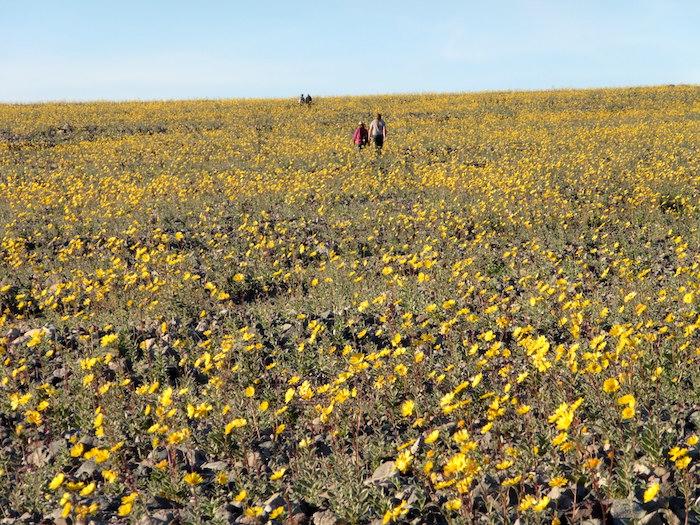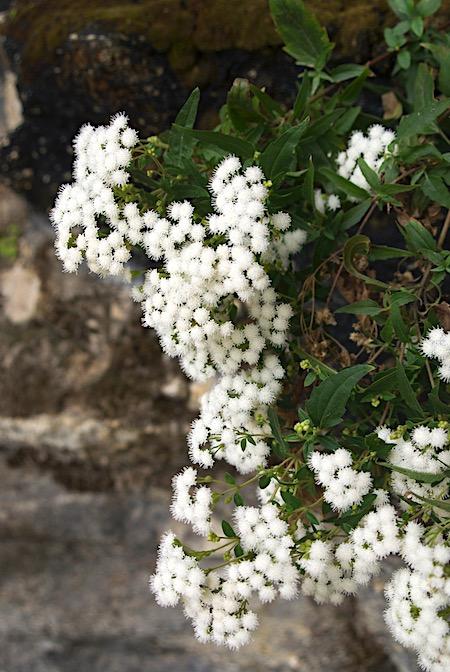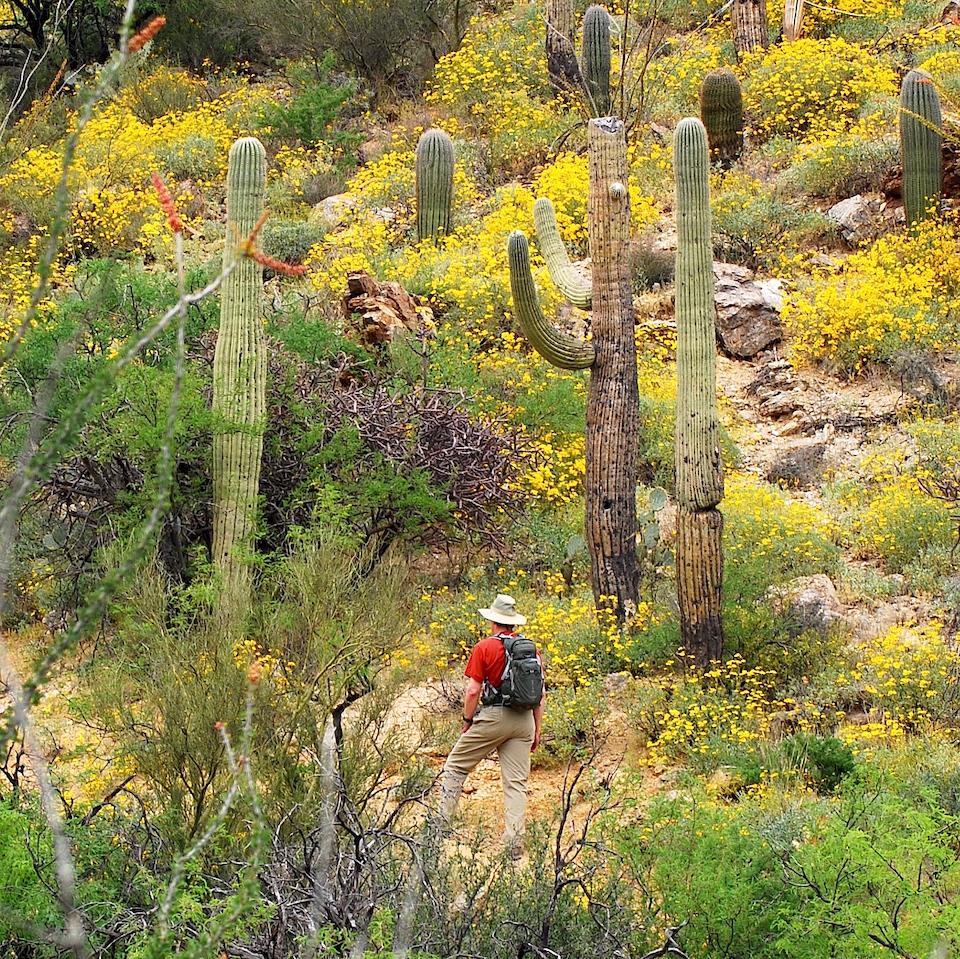
The 2016 super bloom in Death Valley National Park was pretty impressive/NPS
El Niño has been pumping moisture into the Southwest this winter, which raises a question: Will there be a "super bloom' in Death Valley National Park or elsewhere?
It's hard to believe, but it's been three years since my oldest son joined me on a trip to Death Valley to witness the waning days of the 2016 super bloom that dazzled folks. Radiating fields of Desert Gold lined the road from Furnace Creek south to the Ashford Mill Ruins and north along the road to Scotty's Castle. Walking out into the waving wildflowers, we spotted an occasional Desert Five Spot and delicate sprays of Indian Paintbrush. Were we more able botanists we no doubt would have identified Desert Gold Poppies, Golden Evening Primrose, and Fremont Phacelia.
So I reached out the other day to Abigail Wines, the management assistant at Death Valley and inquired: Will there be a magnificent bloom in the valley this year?
"Doesn't look like a superbloom. Probably only a normal bloom," she replied in an email "Height is usually mid-February through early April at low elevations."
While the park did have about a half-inch of rain a couple weeks ago, explained Wines, "we didn't have the presoaking we need in the fall as a prerequisite to super bloom."
But...if you live in the Southwest, or can get there, there's another option: Saguaro National Park near Tucson, Arizona. Chamber folks there told me it has been a pretty wet winter and they're looking forward to a nice desert bloom. My wife and I enjoyed a showy bloom in Saguaro back in April 2010.

You can even find hanging gardens in the Cactus Forest of Saguaro during good blooming years/Kurt Repanshek
You can surround yourself in the color by hiking the Cactus Forest in the Rincon Mountain District to the east of downtown Tucson. Hike out the Douglas Spring Trail and on to Bridal Wreath Falls, where hanging gardens are nourished by the falling waters...which can either be a trickle, or a torrent, depending on recent rains.
During our hike along the Douglas Spring Trail in the Cactus Forest we were surrounded by saguaro sentinels and spindly ocotillos with their red-flowered shafts that gave height to the landscape. Lower down, you'll find a range of cacti, from prickly pears and fishhook cactus to beavertails, pincushions, and Teddy Bear Chollas, along with sprays of wildflowers. The bulk of the wildflowers to be enjoyed are golds, yellows, and whites, with eye-grabbing splashes of blues, reds and oranges.
Another park to consider is Joshua Tree National Park in California. This high-desert beauty can put on quite the show, with dazzling five-spots, orange-red Mojave mound cacti, and Mariposa lilies, just to name three of the park's wildflowers. Look for lovely orange-red Mojave mound cactus in the park's Lost Horse Valley area. The Cholla Cactus Garden and Hidden Valley Nature Trails are good areas to see a variety of cactus species.
Wildflowers in Joshua Tree may begin blooming in the lower elevations of the Pinto Basin and along the park's south boundary in February and at higher elevations in March and April. To check on the status of the bloom, visit this page on the park's website.

The Cactus Forest in Saguaro National Park in bloom/Marcelle Shoop



Add comment